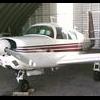Max Power at high altitude
-
Members Online
- Ron McBride
- BravoWhiskey
- Danb
- hollisterjetcenter
- N201MKTurbo
- 201Mooniac
- ProtoFly
- Pinecone
- Dick Denenny
- UteM20F
- Patrick Horan
- AH-1 Cobra Pilot
- Gilt
- Jake@BevanAviation
- Blaze
- Wooly
- TCC
- Scottknoll
- StParkin
- DRH4249
- Greg Ellis
- PeytonM
- chrisburdzy98
- hammdo
- tankles
- caa0428
- SoKYMooney
- DXB
- redbaron1982
- QWright
- eman1200
- varlajo
- Obsession2
- PeterRus
- AndreiC
- exM20K
- EricJ
- aviatoreb
- gabez
- Parker_Woodruff
- ElkoRandy20J


Recommended Posts
Join the conversation
You can post now and register later. If you have an account, sign in now to post with your account.